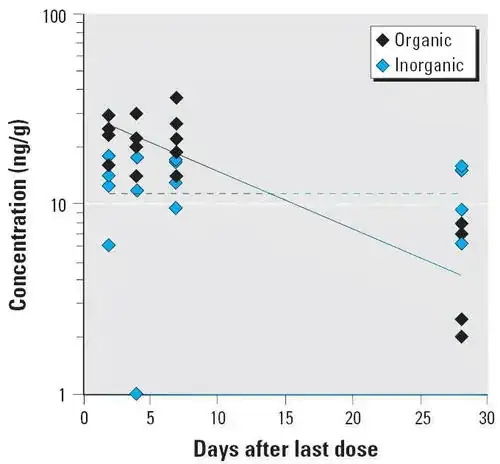STATNews wrote in Correcting Robert F. Kennedy Jr.’s vaccine ‘facts’:
The human body eliminates ethylmercury from vaccines far more efficiently than it eliminates naturally occurring methylmercury.
Robert F. Kennedy Jr. writes in his book Thimerosal; Let the Science Speak:
While claims have been made that the ethylmercury in Thimerosal is safer than the much better-studied methylmercury, these claims are based on weak, questionable evidence and poorly chosen assumptions. As reviewed in Chapters 4–6 herein, available data suggests that the toxicity of these two forms of mercury is at least comparable, and that ethylmercury may leave the blood more quickly—only to persist more stubbornly in organs and tissues of the body, particularly the brain
In that chapter, he argues on page 87:
The WHO’s conclusion that ethylmercury is safer because of its “short” half-life may be based on observations that ethylmercury disappears from blood samples quicker than methylmercury. This tendency may be evidence not of ethylmercury’s comparative safety, but of its greater danger if, as science has suggested, ethylmercury is not leaving the body but simply migrating more rapidly to the organs, including the brain. Indeed, studies have shown that an ethylmercury compound’s short residence in the blood stems from its ability to more easily pass into the organs, where it can remain for long periods and possibly cause injury
Kennedy cites multiple studies in that chapter, one that he finds particularly important is described on page 92:
A particularly important study in this regard was conducted by the University of Washington’s Thomas Burbacher and was published in 2005. The researchers compared mercury levels in the blood and brains of infant macaques injected with Thimerosal-containing vaccines with monkeys who ingested equal amounts of methylmercury hydroxide via a feeding tube. The former group of primates were exposed to 20 micrograms of ethylmercury per kilogram of body weight on the day they were born and when they were seven, fourteen, and twenty-one days old, which was estimated to be within the range of doses that children at different developmental stages were receiving in the United States.
[...]
In general, the primates injected with Thimerosal in the Burbacher study retained twice the level of inorganic mercury—a breakdown product of Thimerosal that has been suggested to be responsible for the brain damage associated with methylmercury—in their brains as the methylmercury-exposed primates.
Is the body better at eliminating ethylmercury than methylmercury as the STATNews article suggests or is Kennedy's description, according to which mercury from ethylmercury accumulates more to the brain more accurate?

